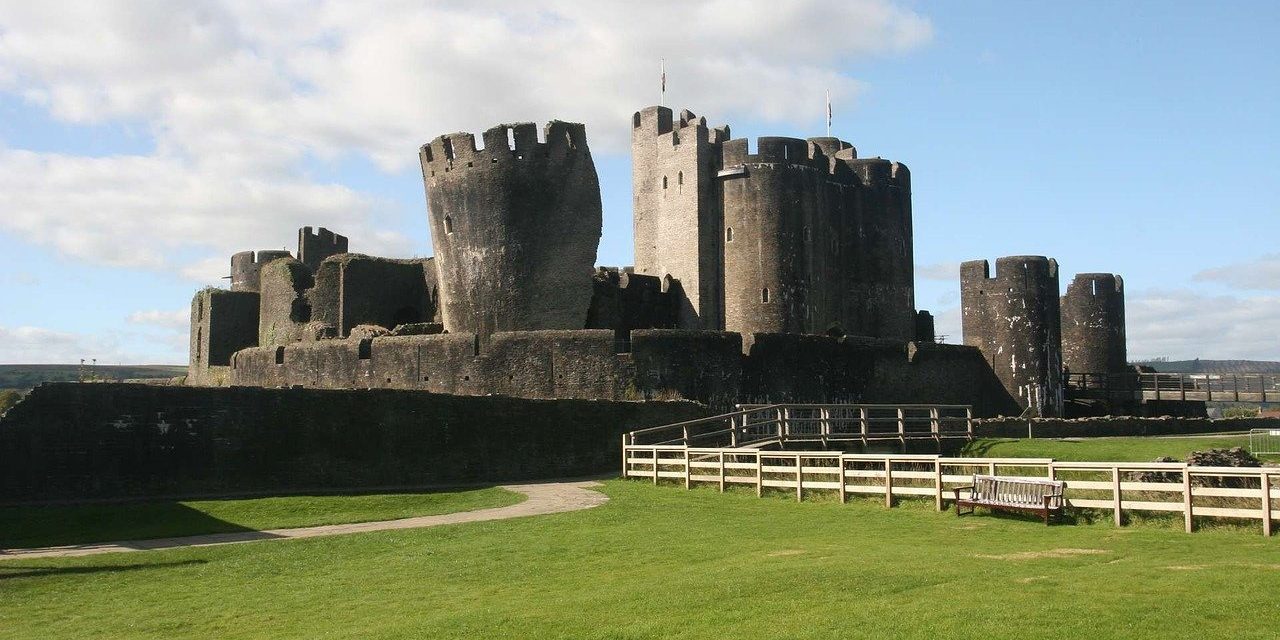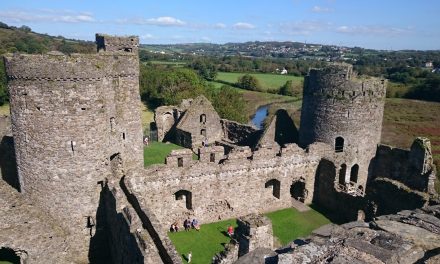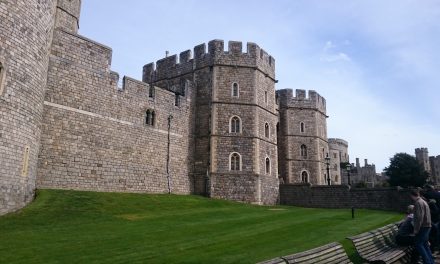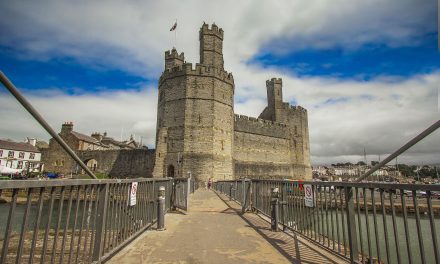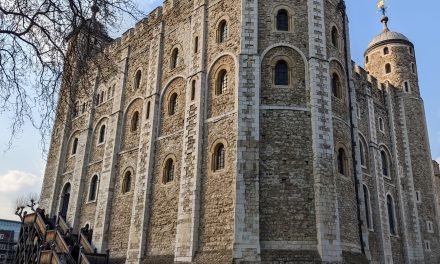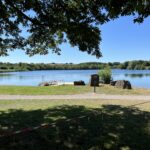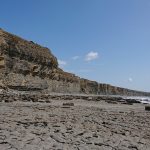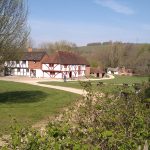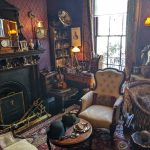What to expect from our article
- 1 Where is Caerphilly castle located?
- 2 When was Caerphilly castle built?
- 3 Timeline of Caerphilly castle
- 4 Castle Design
- 5 What is Caerphilly Castle Famous for?
- 6 Is Caerphilly Castle free?
- 7 Is Caerphilly Castle the largest in Europe?
- 8 Is the dragon still at Caerphilly Castle?
- 9 Why is Caerphilly Castle tower leaning?
- 10 How far is Caerphilly castle from Cardiff?
- 11 Where is Cardiff Castle?
- 12 Who attacked Caerphilly Castle?
Where is Caerphilly castle located?
Caerphilly castle is an impressive partially ruined castle, and it is located in the heart of Caerphilly in south wales. Two great man-made lakes surround the castle itself, forming part of its defences and the entire site occupies around 30 acres in total making it the second-largest castle in Europe.
When was Caerphilly castle built?
Caerphilly castle was built in the 13th century by a man called Gilbert de Clare; De Clare was an English nobleman who at the time was also known as red Gilbert De Clare or the red earl. The reason for this was thought to be because of his red hair and fiery temper.
Construction of the castle began in 1268, and much of the castle was built in just three short years. In 1270 much of the site was burned to the ground after a disagreement with a rival Welsh prince named Llywelyn Ap Gruffudd. Funnily enough, the castle was being built to defend against this very person.
Henry III stepped in to mediate between the two, and he sent his soldiers and two bishops to take control of the castle. It was promised that further building work would be put on hold during this time and arrangements were made for the following summer to negotiate.
Gilbert de Clare initially agreed to the negotiations. Still, a few months later he sent his men (although this couldn’t be proven) to remove the bishops and the soldiers taking back control of the castle, work on the site began once again.
Llywelyn Ap Gruffudd made another attempt to destroy the castle in 1271 but wasn’t able to. Despite his efforts to destroy or take control of it, the castle was completed by 1272.
In today’s money, it is estimated that building the castle could have cost in excess of £19,000; however, the true cost is not known.
Timeline of Caerphilly castle
1268 Gilbert De Clare started the original construction of the castle.
1270 much of the site was burned down by Llywelyn Ap Gruffudd
1295 De Clare died and the castle was passed down to his son who was also named Gilbert De Clare.
1314 young De Clare passed away at age 23 while fighting in the battle of Bannockburn. After he died, the castle was temporarily placed in control of the crown but before they could settle into whose hands, the castle would be passed a revolt broke out, and the castle was attacked. While the castle didn’t endure too much damage, the town was totally destroyed. In order to deal with the rebellion, an army was dispatched and eventually they regained control of the situation and ended the siege.
1317 ownership of the castle would be settled and it would be passed to Gilbert’s sister Eleanor. It wouldn’t be too long before the castle changed hands again and it wouldn’t be the final time either.
1416 the castle would be passed onto Isabel Le Despenser
1449 it was passed onto Jasper Tudor
1486 it was into the hands of the Earl of Pembroke.
1583 it was said that apart from the tower which housed prisoners it was nothing more than a ruin surrounded by marshland.
1776 the marquesses of bute acquired the castle and extensive repairs and reconstruction were carried out over future years.
1950 caerphilly castle would change hands for the final time when it was given to the state.
These days Caerphilly Castle is managed by Cadw, and it is now Caerphilly town’s main tourist attraction.
Castle Design
The design of Caerphilly Castle was heavily inspired by Kenilworth castle, Kenilworth also a mighty fortress was surrounded by man-made lakes forming part of the castle defences. Seeing how successful this was at Kenilworth, a decision was made to incorporate it at caerphilly.
Caerphilly Castle was one of the first castles in Britain to be built using concentric design. Concentric castles were built by using a two skin method, basically, a castle within a castle making it virtually impossible to penetrate.
What is Caerphilly Castle Famous for?
Caerphilly Castle is most famous for its large gatehouses and bringing the introduction of concentric castle design to Britain.
Other examples of concentric castles include;
- Harlech
- Caernafon castle
- Beaumaris castle
Is Caerphilly Castle free?
Entry to the castle is not free, but there is a notice on the website stating that due to ongoing conservation work that is being carried out on the castle, entry is limited to the outer ward and this will be free to people in wales.
Parking for the castle is via two pay and display car parks, one is a long stay and the other one short stay and both are within 500m of the castle.
If you are a regular visitor to Cadw managed historical sites you could sign up for the membership card which gives free or heavily discounted entry to all Cadw managed historical sites.
Cadw membership entitles you to
- 10% off in all Cadw gift shops
- 50% off entry to English Heritage and Historic Scotland sites
- FREE access to English Heritage and Historic Scotland on renewal
- FREE access to Manx National Heritage properties
- FREE membership pack including car sticker and full-colour map
While we haven’t had the Cadw membership before we did sign up for the English heritage passes a few years ago, and it was definitely worth the initial cost of membership. We have visited lots of historical sites all over England and Wales, which would have cost so much more than the initial value of the membership itself.
Is Caerphilly Castle the largest in Europe?
Not quite, but it is the second-largest castle in Europe, next to Windsor Castle of course. Caerphilly castle sits in 30 acres of land and is surrounded by great man-made lakes. So while it isn’t the largest castle in Europe, it is most definitely a castle that needs to be explored for its greatness.
Is the dragon still at Caerphilly Castle?
Yes, the dragon is still at Caerphilly castle, this attraction is called the dragon’s lair with its very own live-in dragon family with an interactive dragon’s tale. The dragon’s lair has been brought to life with light, sounds and even smoke to make it as realistic as possible.
Along with the dragon’s, lair attraction is gilbert’s maze and there is also the Cadw app you can download, the ‘Little Dragons’ game will keep your little ones entertained while visiting the castle.
The little dragon game is spread over Harlech, Beaumaris, Conwy, Caernarfon, Raglan, Chepstow and Caerphilly castle, and there are 70 baby dragons in total to be caught. Ten different coloured baby dragons to capture at each castle. Are you up to the task?
You must collect your baby dragons safely! The baby dragons are magical dragon’s who take safety very seriously.
You will not find the baby dragons in specific locations in the castle these include;
- On the stairs
- In the toilets
- In the car park
- Near the water or castle moats
- Behind roped areas
- In the shop
- On the wall walks or in towers
The baby dragons cannot fly yet, so you better keep your eyes down low in order to catch them.
Why is Caerphilly Castle tower leaning?
It is not known why the tower is leaning; it could be due to subsidence from when the lakes dried up many years ago after the castle slipped into decline, or it could be from any of the battles that were fought there many years ago.
From what I have read caerphilly castle came out relatively unscathed from previous battles, thanks to its concentric design. So as much as we would like to think the tower, nicknamed the” Welsh tower of Pisa” got its lean from battle scars, it’s probably just from the subsidence that happened on the site.
How far is Caerphilly castle from Cardiff?
Caerphilly Castle is about 8 miles away from Cardiff and takes around 20 minutes to reach by car. You could kill two birds with one stone and take a trip to Caerphilly Castle and Cardiff Castle all in the same day.
Where is Cardiff Castle?
The 11th century Cardiff Castle is located on Castle Street in the heart of the city of Cardiff, close to the city centre. The De Clare family that built Caerphilly Castle also have links to Cardiff Castle and were reported to be living at Cardiff Castle during 1213-1314 AD
Who attacked Caerphilly Castle?
There were many attacks on Caerphilly Castle, but the most famous are those of Llywelyn ap Gruffudd. In 1270 Llywelyn ap Gruffudd attacked the castle burning much of it down, despite the burning of the castle Gilbert de Clare continued building and finished much of it in three years. In 1271 he attacked again but by the time the second attack happened the castle had so many defences he wasn’t able to take the castle or even cause any damage to it.
The castle was attacked again in
- 1294
- 1316
- 1326
How did the castle look when it was built?
There are many images online of how the castle would have looked back when it was built, but what better way to see it than an interactive video. Cadw has created the first CGI interactive video giving you a visual walkthrough of what Caerphilly Castle would have looked like back in the 1300s.

